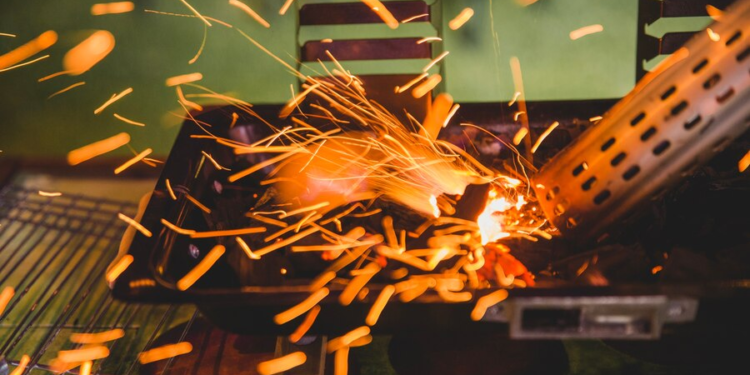A resistance welding machine is a type of welding equipment that uses electrical resistance to generate heat allowing materials to fuse. It works by passing a high electric current through the workpieces which creates heat at their contact points. This process is commonly used for joining metal parts in various industries providing strong and efficient welds.
Imagine effortlessly bonding metal parts with just a spark of electricity. A resistance welding machine makes this possible using heat generated by electric resistance to create strong lasting welds. Whether in automotive manufacturing or electronics this powerful tool revolutionizes how we join materials together.
A resistance welding machine is a powerful tool that joins metal pieces by using heat generated from electrical resistance. During the process a high current flows through the metals creating enough heat to melt and fuse them at the contact point. This method is efficient and widely used in industries like automotive and electronics for making strong reliable connections.
What is a Resistance Welding Machine?
A resistance welding machine is a device that joins metal parts by using heat generated from electrical resistance. When an electric current passes through the materials under pressure it creates enough heat to melt and fuse them together. This efficient process is commonly used in industries like automotive and electronics for strong reliable welds.The process typically involves the following steps:
- Contact Pressure: The machine applies pressure to the metal pieces.
- Electrical Current: An electrical current flows through the materials, generating heat due to their resistance.
- Bond Formation: The heat melts the metal at the joint, allowing it to fuse upon cooling.
Types of Resistance Welding Machines
Resistance welding machines can be categorized into several types each suited for specific applications:
1. Spot Welding Machines
- Description: Spot welding machines are used to join metal sheets by melting small spots at the contact points.
- Applications: Commonly found in the automotive industry for joining body panels.
2. Seam Welding Machines
- Description: These machines create continuous welds along a seam making them ideal for cylindrical shapes.
- Applications: Often used in manufacturing storage tanks and pipes.
3. Projection Welding Machines
- Description: Projection welding machines utilize raised sections (projections) on the workpieces to focus heat at specific points.
- Applications: Used in the production of fasteners and automotive components.
4. Flash Welding Machines
- Description: Flash welding involves the use of high currents to create a molten flash of metal that joins two parts.
- Applications: Common in large assemblies such as rail tracks.
5. Upset Welding Machines
- Description: Upset welding machines apply pressure and heat simultaneously to forge the materials together.
- Applications: Typically used in producing bolts and other fasteners.
Key Advantages of Resistance Welding Technology
Resistance welding machines offer several benefits that make them a preferred choice in manufacturing:
- Speed: The process is quick, allowing for high production rates.
- Efficiency: Minimal energy is wasted as heat is generated only at the weld area.
- Strength: Creates strong and reliable joints often stronger than the base materials.
- Automation: Easily integrated into automated production lines reducing labor costs.
- Minimal Distortion: Low heat input leads to less warping or distortion of materials.
Exploring the Applications of Resistance Welding Technology
Resistance welding machines find application in numerous industries such as–
Sector of Automobiles
- Application: The process of sewing together the panels of the body – spot welding and seam welding of tanks.
- Advantages: Rapid fabrication with sound enough practically high-quality joints.
Electrical Engineering
- Application: Connections of batteries, circuits and so on.
- Advantages: Accuracy and quality in the assembly of tiny components.
Aerospace Engineering
- Application: Attaching sectors made from thin walled structures made of lightweight materials for aircraft parts.
- Advantages: Heavy-duty joints which can survive extreme conditions.
Building
- Application: Fabricating steel girders and other structural elements.
- Advantages: Low weight and speedy erection.
How To Select A Suitable Resistance Welding Machine
In choosing a resistance welding machine the following factors should be taken into account:
Type Of Material
- Compatibility: The machine must be able to define the materials that will be joined as in steel materials, aluminum materials or any other alloy.
Thickness Of The Materials
- Capacity: Different machines have different capacities when it comes to welding of materials of different thicknesses.
Volume Of Production
- Speed Requirements: Make sure to check if you need high-speed machineries for high production or low-speed machines suitable for low production.
Weld Type
- Specific Needs: Figure out if you require spot welding, seam welding, projection welding or flash welding technology.
Level Of Automation
- Integration: Decide if there is a need for full automation or for manual operation with semi-automatic mode.
Operational Principles of Resistance Welding Machines
If one knows the operational principles of spot welding machine it will help them in using the machines effectively. Here are the key points.
- Electrical Circuit: the welding machine makes an electrical circuit with the workpieces.
- Heat Generation: the material resistance changes electrical energy into thermal energy
- Fusing Materials: The energy generated reaches the metal’s melting point allowing them to join.
- Cooling: After the electric current ceases the bond I joint cools and hardens thereby giving an adhesive strength to the bond.
Maintenance of Resistance Welding Tools
Maintenance practices are important in maximizing the life span and performance of resistant welding machines. Maintenance practices include the following;
- Regular Inspection: Appropriate wear check of electric contacts, electrodes and cables should be done regularly.
- Cleaning: The machine should be kept free from any kind of dirt that may impair its functionality.
- Calibration: Flexible machinery should be adjusted on a regular basis to keep its operation accurate
FAQs:
What is the application of resistance welding?
Resistance welding is mainly used for the purpose of welding together metal parts creating solid and reliable joints when required. It is extensively used in industries such as automobile production, assembling electronic devices and building aircraft where quickness and durability is required.
What is the mechanism behind a resistance welding machine?
A resistance welding machine passes an electric current through metal parts and at the same time applies a compressive force. Due to electrical resistance, a certain amount of heat is produced at the joint region which causes melting of the metal and its fыsion when cooled down.
What are some of the benefits of resistance welding systems?
The benefits of resistance welding systems are that they are fast, effective and produce reliable connections. It also causes less strain on materials and can be set up for mass production without much difficulty making it very suitable for production processes.
Conclusion
To sum up, resistance welding equipment is viewed as a crucial aspect of production in contemporary manufacturing. Certainly, joining metal components becomes easy and fast with this technique due to its well-researched and amazing attributes. Hence it’s not a surprise that this technology is embraced in high production industries like vehicle electronic and airplane manufacturing.
Furthermore with the advancement of technology the resistance welding process technology also improves boosting production as well as the application range. It is worth noting that purchasing such equipment increases productivity and results in better and more durable goods.






